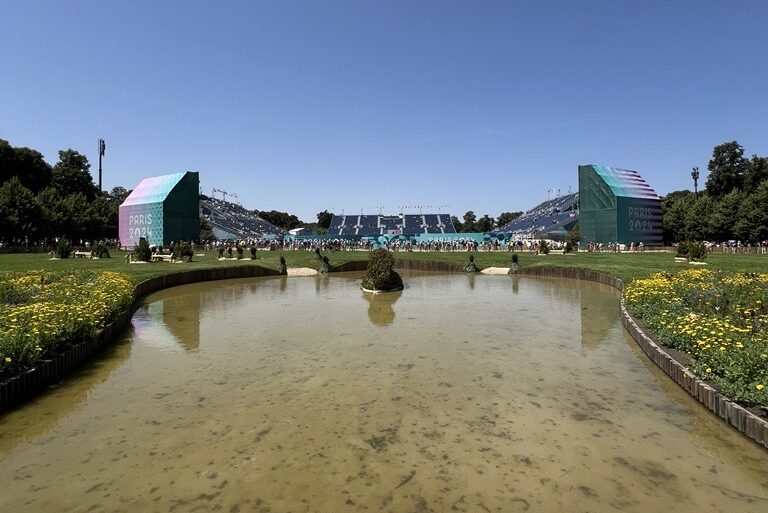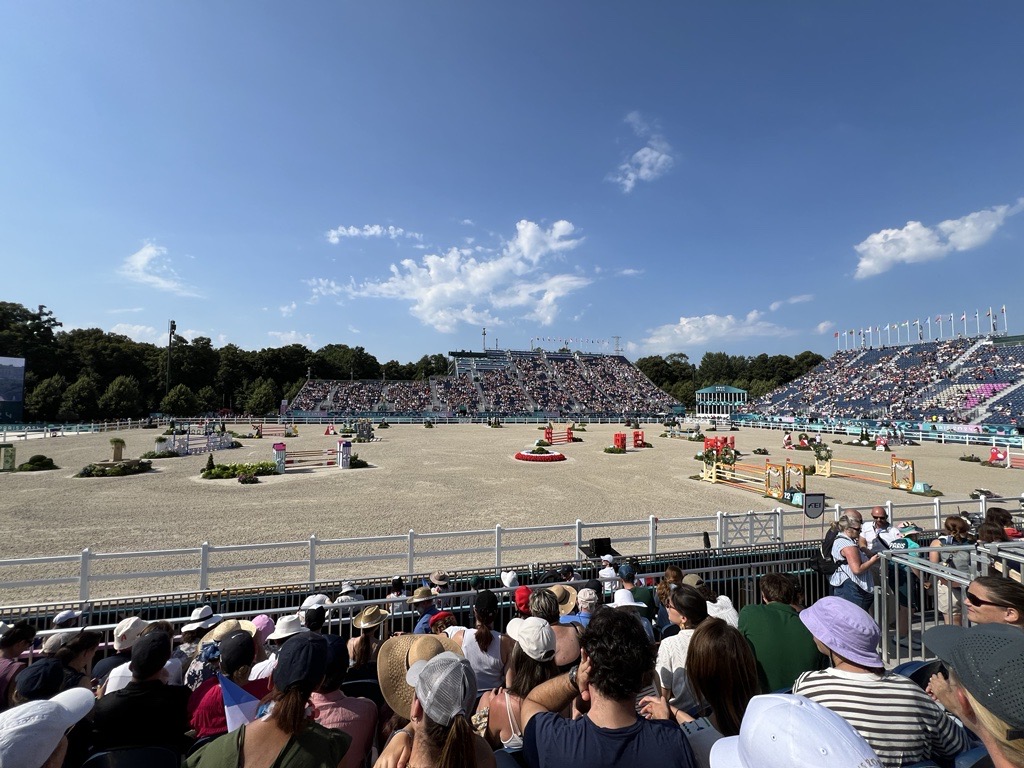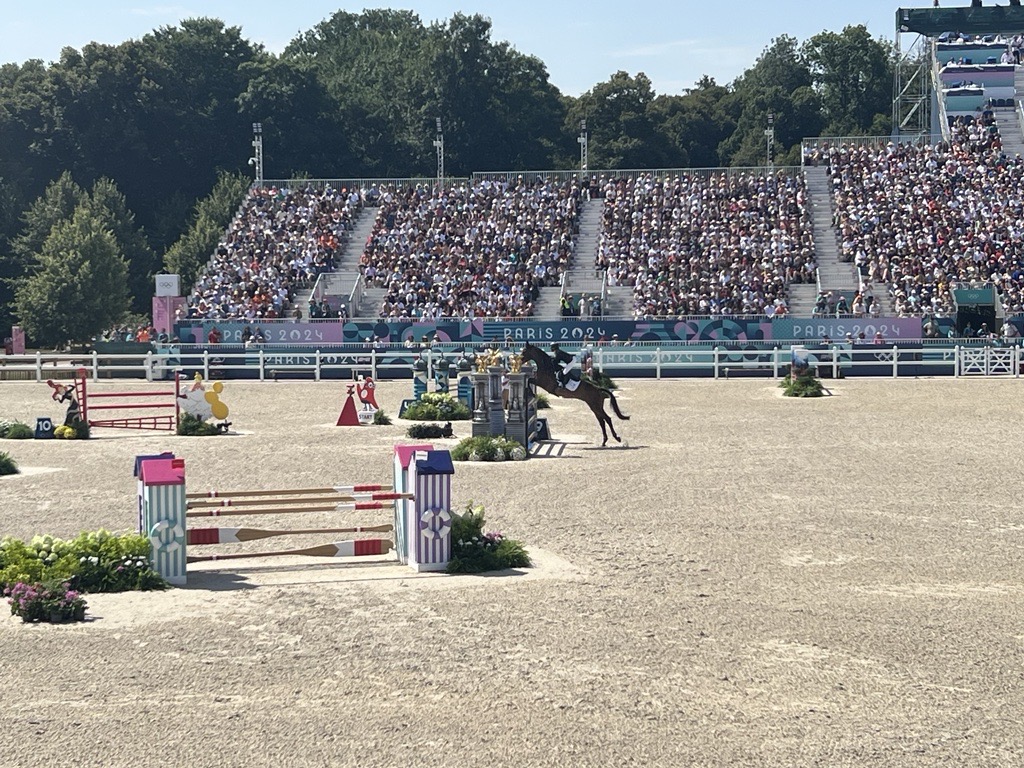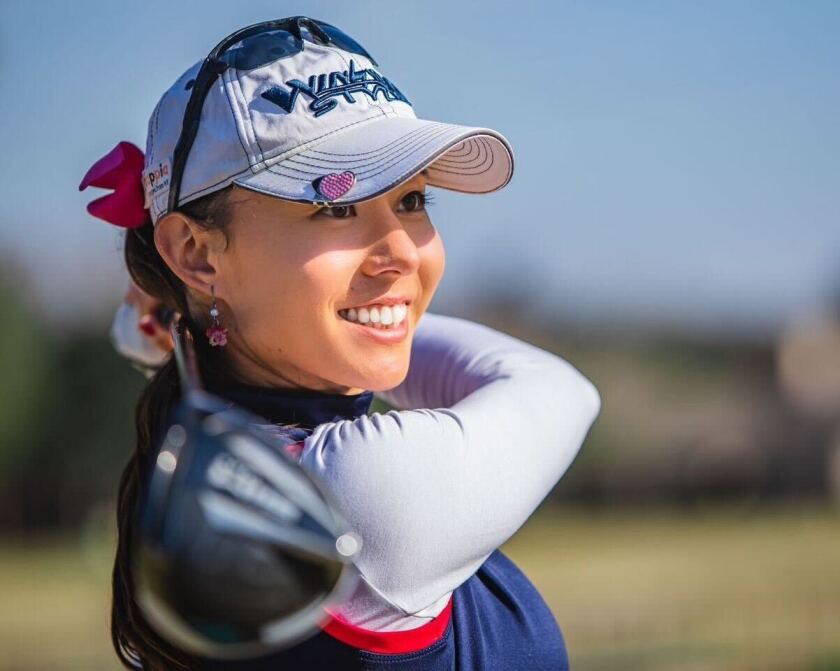Who bought tickets or tuned into the Equestrian events at the Olympics to see the venue in Versailles? We’ll admit that the Gardens of Versailles was our main draw to watching Equestrian Eventing, but we gained so much more.
Yes, the venue set across the pond from the Chateau de Versailles was quite a site. But what struck me most was the fact that men and women were competing equally, with no different time standards or gender minimums on teams. The scores and teams were based fully on meritocracy, and it was refreshing.
Olympic Equestrian has been that way since women were first allowed to compete in 1964.
What is Equestrian Eventing?

First, let’s dive into the basics – what is Equestrian Eventing? It’s a three-event competition – dressage, cross country and jumping – where riders and their horses do their best to not penalize themselves. Those with the lowest scores (penalties) at the end of the competition count toward their team scores if applicable and toward their individual runs at the podium.
I won’t pretend to be an expert in any of these events, but dressage is when the horse majestically dances (and it has become one of Snoop Dogg’s favorite events – now you know the one). This phase tests the rider and horse’s connection and poise.
Cross country is one of the more intuitive disciplines in that the horse and rider run an obstacle course and show off their power and speed. Because there are jumps involved, it’s easier to notice penalties, and the uneven terrain makes for an interesting watch.
Equally intuitive, show jumping involves several horses running the same course. A course is set with a specified number of jumps, and the horse and rider must complete the track within a certain amount of time, but precision is crucial here. Anyone who knocks off rungs or misses a jump will be penalized.
During the Olympics, the Equestrian Eventing combines all three events into one competition – for both teams and individuals – but then each event serves as its own team and individual competitions as well (different courses, different days, potentially different riders). This is where specialists can come in and still have an opportunity to medal.
What Happened in the 2024 Paris Olympic Games?

Back to the Eventing Finals. 11 of the 16 three-person teams that qualified for the Olympics had at least one woman on the team, with four of those teams mostly women and two of those teams 100% women. Each country brought their best riders, regardless of gender.
Great Britain was one of the teams with two women, and not only did they win gold as a team, but Laura Collett ended up on the podium again as a bronze medalist individually. It was fitting that Princess Anne of England was the one to bestow the gold medals upon the Great Britain team, as well as silver medals upon France’s all-male team and bronze medals upon Japan’s all-male team.
Germany’s Michael Jung and his horse, Chipmunk FRH, took home gold individually. France’s Christopher Burton earned a warm congratulations from his fellow countrymen as he earned silver.
Belgium and Sweden were the two all-female teams, and they placed fourth and sixth, respectively, and respectably.
What Does This Gender Equity in Equestrian Mean?
While I personally was impressed by the one sport in the Olympics where men and women competed against each other head-on without any gender-specific rules or limitations, the sport is still male-dominated.
While approximately 40% of the team representatives were women and 40% of the individual eventing finalists were women, in the individual one-day events, we were much further from parity.
For example, only 12% or so of qualifiers for the individual show jumping event were women, with that percentage dropping to about 8% for those that made it into the final round. Dressage, on the other hand, saw a majority in female competitors.
Some argue that dressage is inherently more feminine than cross country and jumping, so that’s why more women compete in dressage – the first equestrian event women were allowed to compete in at the Olympics. Enforcing separate but equal events could encourage more men to compete in dressage and more women to compete overall.
Do you think Equestrian Eventing is on the right track? Reach out to us on social media or reply to our newsletter with your thoughts.



